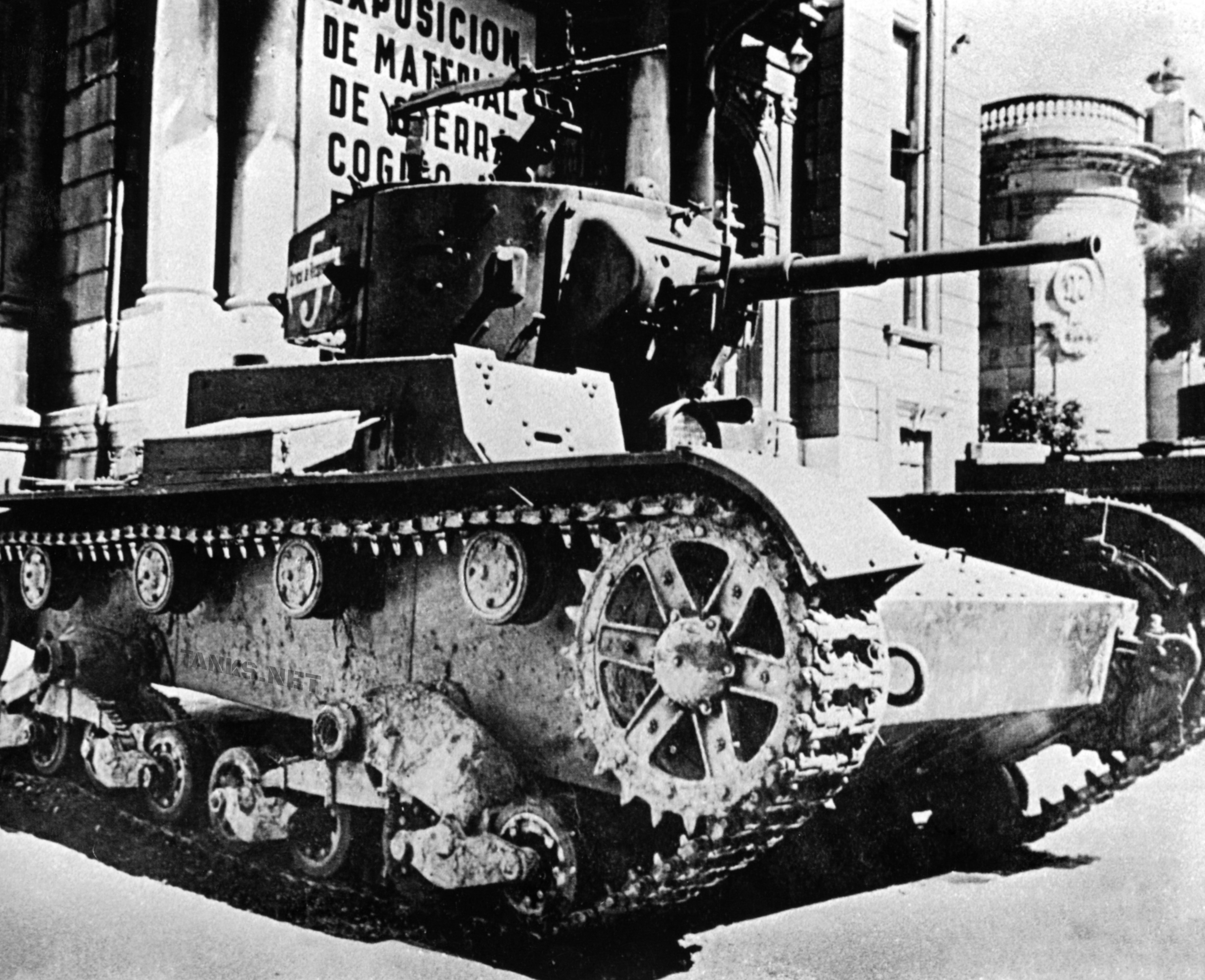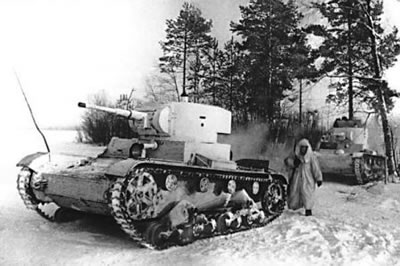The design of the Soviet Union’s T-26 light tank was based on that of Britain’s Vickers 6 Ton tank.
Although the British rejected the Vickers 6 Ton Tank, the T-26 was extremely successful.
The T-26 light tank was used during the Spanish Civil War and in the Winter War against Finland.

In World War II, the T-26 light tank was used at the Battle of Khalkhin Ghol, between Japan and the USSR, and during Operation Barbarossa, Germany’s attempted invasion of Russia. The Soviets also used T-26 tanks when they invaded Poland in 1939.

The T-26 had a hull that was different from the Vickers 6 Ton tank. It also had higher turrets. (Both tanks had twin turrets.) The turrets on the T-26 were redesigned to carry a DT machine gun.
Production of the T-26 began in 1931.
A single-turreted version, the T-26 B, was developed in 1933.
Variants of the T-26 light tank included a commander’s version with a radio, a self-propelled gun, a flame-thrower, a bridgelayer and a tank that contained a fog machine.
T-26 Light |
|
|---|---|
| Active: | 1931 |
| Crew: | 3 |
| Weight: | 9.5 tons (9,600kg) |
| Length: | 15ft 3in (4.65m) |
| Height: | 7ft 4in (2.24m) |
| Width: | 8ft 0in (2.44m) |
| Weapons: | Main – 1.77in (45mm) gun, Secondary – 0.3 inch (7.62mm) DT machinegun |
| Armor | Maximum – 0.59in (15mm) |
| Engine: | GAZ 4-cylinder gasoline, 90hp |
| Speed: | 19mph (31kph) |
| Range: | 150 miles (240 km) |